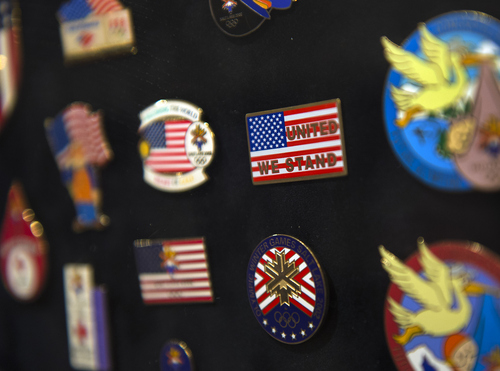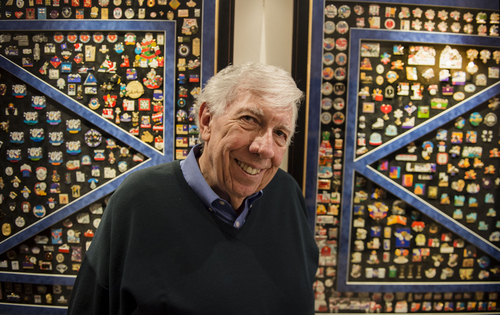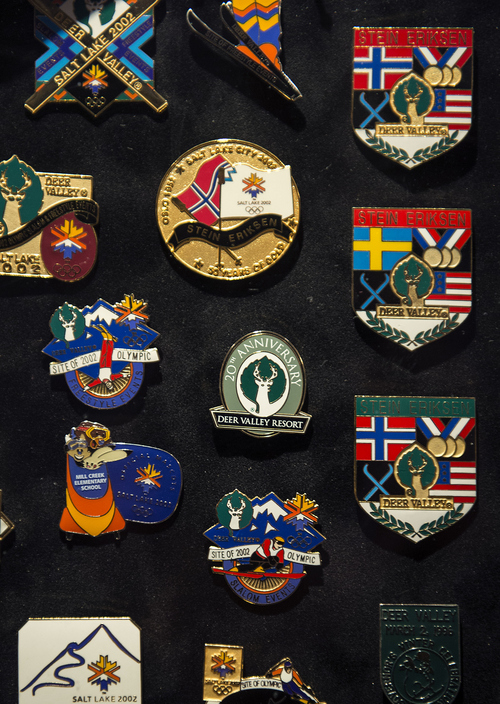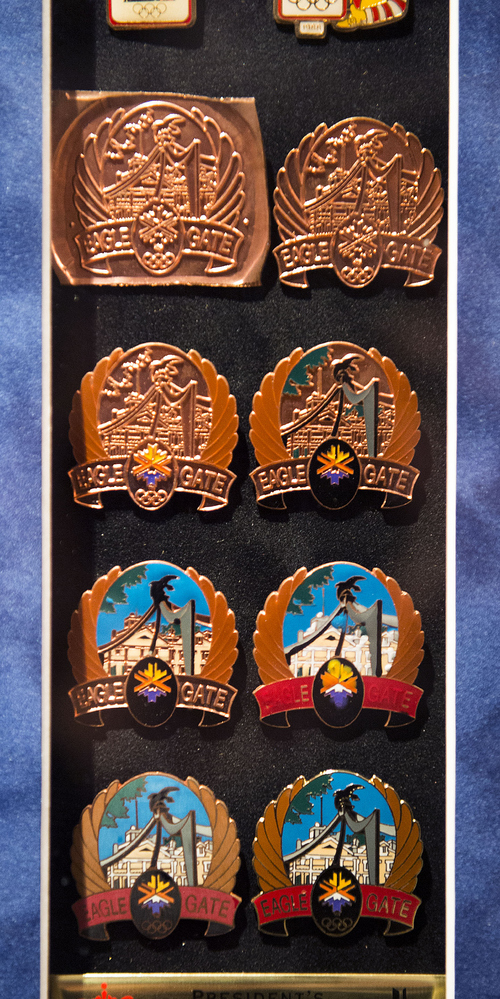This is an archived article that was published on sltrib.com in 2014, and information in the article may be outdated. It is provided only for personal research purposes and may not be reprinted.
Think back to the 2002 Winter Olympics in Salt Lake City. Chances are, one of the most enduring memories involves trading, buying and collecting pins from all over the world. Hot collectibles such as the green Jell-O pin sold for as much as $300.
No doubt there are hundreds if not thousands of Utahns who have bags of these Olympic treasures stuffed somewhere in a drawer or basement. A few diehards will no doubt get online in the next few weeks and purchase two or three pins from the upcoming Winter Games in Sochi, Russia.
According to the website http://www.olympic.org, pin trading during the Games began in the 1980s as traders began hunting for unique and unusual pins. Coca-Cola's trading area in Calgary in 1988 added to the popularity of collecting,
While most pins have not held their value over the years and many are readily available on eBay where the famous green Jell-O pin could be purchased for $11.95 these days, that doesn't matter to collectors such as Utah's Jay Niederhauser, whose collection of 1,180 pins can be seen displayed in frames at the Blue Boar Inn in Midway.
"They represent a lot of grocery money," said Niederhauser, who began collecting pins in 1995 at an Olympic gathering at Salt Lake City Hall.
He picked up two or three of the old bid logo pins off card tables. Not long afterward, he joined some pin collecting clubs. Using street smarts and an ability to know which pins to purchase multiple copies of for trading purposes, Neiderhauser soon owned all sorts of different kinds of pins.
The rarest?
That would be a Stein Eriksen signature shop pin. What was unusual about this particular pin was that it was printed with a Swedish flag on it. Eriksen earned his Olympic medals skiing for Norway.
"He was quite upset about it," recalled Niederhauser. "When he saw that pin, he told one of the bellmen to throw it to the bottom of Jordanelle Reservoir."
Niederhauser, who has been the innkeeper at the Blue Boar Inn, was asked by the inn's owner, Marva Warnock, to bring them to the Blue Boar. They were all in categories placed in different bags and represented a great investment in time and money. Warnock asked a professional to frame and place the entire collection. To this day, Niederhauser can tell visitors the story behind each pin.
Terrence Wilson of Kolor Kraft Coins & Supplies, 125 E. Gordon Lane in Salt Lake County, said he still sells Olympic pins. Every time another Olympics begins, demand and prices for the pins tend to go up.
"The next two weeks, they are back to where they were," he said. "They will be the same prices as the Salt Lake years."
Wilson said the pins may not be the best investment, but they remain fun to collect. He said a number of teens are getting into collecting them this year.
"Once you get one, you want to keep going until the Olympics are over," he said.
Vintage Salt Lake 2002 Olympic pins are available on a number of collecting sites as well as eBay. A quick look at prices showed that a fry sauce pin could be obtained for $5.99, three FBI pin badges for $18, a collection of 21 NBC pins for $29 or a collection of 39 pins for $19.99.
Sochi pins are also on sale, with some proving to be a bit pricey. For example, a limited edition framed 17-pin set was selling for $185 on one site and a popular super 3-D pin was selling for $64.95, but it was out of stock on that site.
As someone who designed and sold some of the classic Salt Lake City Olympic Games pins, Tribune editorial cartoonist Pat Bagley said people bought them more for sentimental value.
"They thought they would retain their value, but that was just not true," said Bagley. "I did about a dozen."
Bagley said he rarely gets asked for an old pin, but people do remember them. He said his most popular creation was his "Endangered Species Utah Democrat" pin.
"The whole thing about trading the pins is a lot of fun," said the cartoonist. "There were some that lit up or made sounds. There was a little bit of competition among local businesses to come up with the best pins."
Another good pin collection can be seen at the Utah Olympic Park museum in Park City.
"I still field questions calling about specific pins," said Melanie Welch, the Olympic Park's marketing manager. "A lot of people collect for World Cup events as well. ... After we've hosted something, people ask if we have pins associated with it or not."
Those 2002 pins tucked away in a basement or in a drawer along with perhaps a Roots Olympic hat may not be worth a fortune. But they should bring back some fun memories.
Twitter: @tribtomwharton









